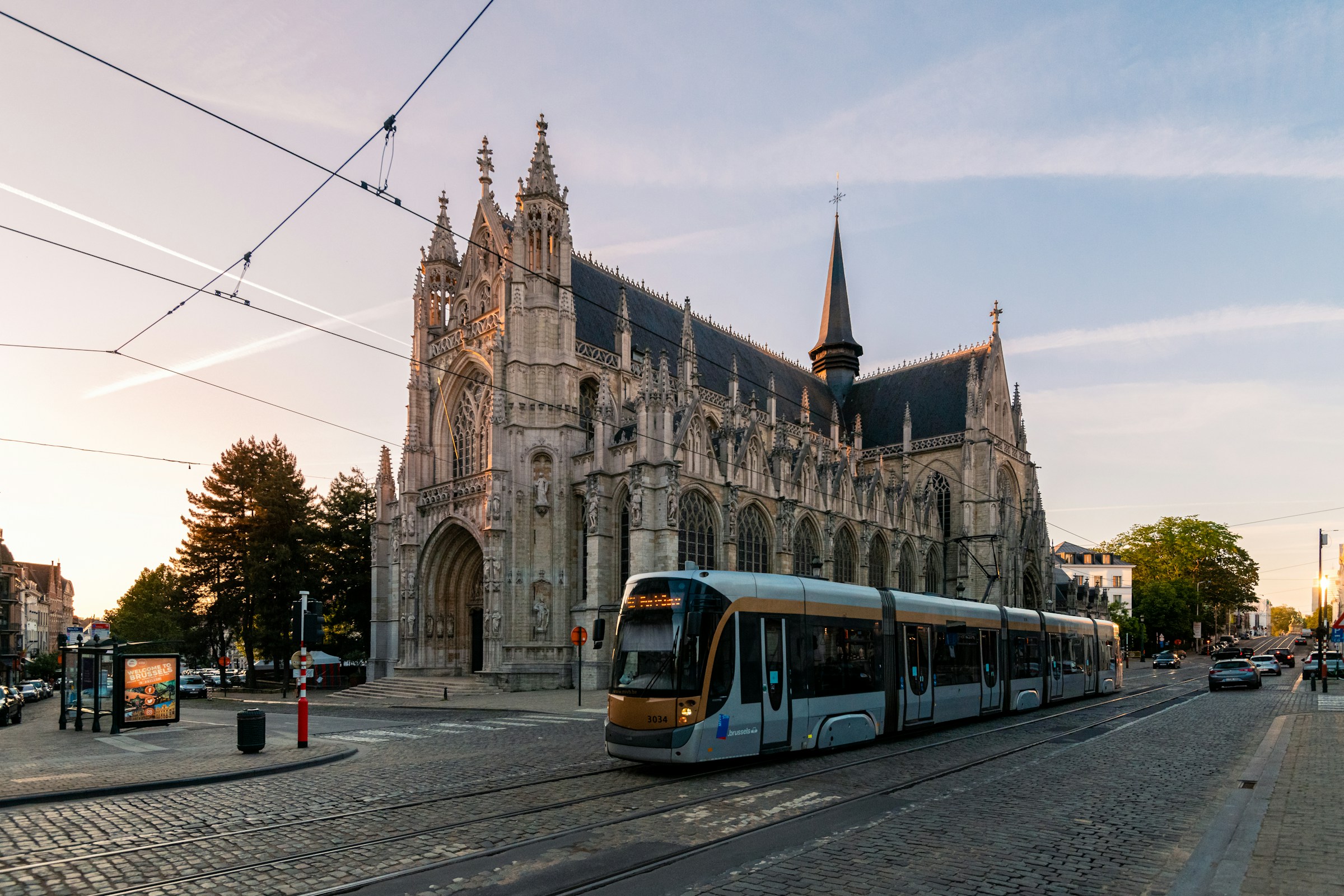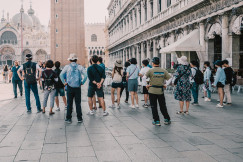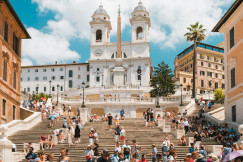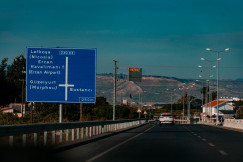Articles
03 June 2025
One Ticket to Travel Them All: Multimodal Solutions in European Tourism
Articles
03 June 2025
Adventure tourism
Coastal, maritime and inland water tourism
Cultural tourism
+39 more
Login / create an account to be able to react

This article highlights the growing importance of integrated, user-centric mobility systems that enable seamless travel across various transport modes and regions - crucial for both sustainable tourism and the EU’s green and digital goals. While new infrastructure helps, the real transformation lies in digital integration: data-sharing, interoperability, and cooperation among transport operators. Despite promising examples like Finland’s data-sharing laws and Nordic MaaS platforms, barriers such as limited content access, lack of standardisation, and unsustainable business models still hinder progress. To overcome these, stakeholders must align commercial incentives, enhance governance, and engage tourism actors in co-creating inclusive, accessible mobility solutions that work across borders.
Topics
Albania
Armenia
Austria
Belgium
Bosnia and Herzegovina
Bulgaria
Croatia
Cyprus
Czechia
Denmark
Estonia
EU-27
Finland
France
Georgia
Germany
Greece
Hungary
Iceland
Ireland
Italy
Kosovo
Latvia
Liechtenstein
Lithuania
Luxembourg
Malta
Moldova
Montenegro
Netherlands
North Macedonia
Norway
Poland
Portugal
Romania
Serbia
Slovakia
Slovenia
Spain
Sweden
Switzerland
Türkiye
Ukraine
Academic / Research and VET Institutions
Business Support Organisation
Company with 250 or more employees
Cluster Organisations
Consumer Organisations
Cultural and Heritage Organisations
Destination Management & Marketing Organisations
EU Institutions
Financial Institutions and Investors
Industry Associations and Chambers of Commerce
International Organisations
Local Authorities
Media / Journalist Organisations
National authorities
Networks and Federations / Confederations
NGOs / Non-profits
Notified Bodies
Regional Authorities
SMEs (a company with less than 250 employees)
Social Economy Entity
Trade Unions
Other
-
Specific types of tourism
-
-
Adventure tourism
-
Coastal, maritime and inland water tourism
-
Cultural tourism
-
Ecotourism
-
Education tourism
-
Festival tourism
-
Gastronomy tourism
-
Health and medical tourism
-
MICE tourism
-
Mountain tourism
-
Religious tourism
-
Rural tourism
-
Sports tourism
-
Urban/city tourism
-
Wellness tourism
-
-
Transition Pathway Strategic Areas
-
-
Multimodal travelling
-
-
Business activities
-
-
Activities of amusement parks and theme parks
-
Activities of associations and other organisations supporting tourism
-
Air passenger transport
-
Camping grounds, recreational vehicle parks and trailer parks
-
Events catering and other food services
-
Festivals, cultural and entertainment activities
-
Gardens and nature reserves activities
-
Holiday Housing / Apartments and other short stay accommodation
-
Hotel and similar accommodation
-
Mobile beverage services
-
Mobile food services
-
Museums
-
Operation of historical sites
-
Other
-
Other accommodation
-
Other amusement and recreation activities
-
Other food and beverage services
-
Other holiday reservation services
-
Other tourism transportation activities
-
Rail Passenger transport
-
Recreational and sport activities
-
Restaurants, cafes and bars (Food and Beverage serving activities)
-
Road passenger transport
-
Tour operator activities
-
Travel agency activities
-
Water (sea, coastal and inland) passenger transport
-
Share
Why Multimodal Ticketing Matters Now
Multimodal ticketing promises travellers a seamless, integrated, and user-friendly way to move across regions and transport modes while guaranteeing continuity of transport in the event of disruption. In an era of rising environmental consciousness and digital transformation, this concept aligns with key EU priorities such as the European Green Deal, the Sustainable and Smart Mobility Strategy, and the twin transition in tourism. For travellers, it answers growing demand for convenience, sustainability, and freedom of choice. For destinations and mobility providers, it represents a smart response to challenges of accessibility, fragmentation, and visitor pressure.
While building new infrastructure - such as train stations at airports - can support integration, the core challenge and opportunity lie in connecting existing systems and actors through improved distribution, data-sharing, and cooperation.
This approach not only reduces costs for passengers, but it also encourages a shift in mindset. Instead of developing siloed transport networks, we must begin to see mobility as a shared ecosystem that thrives on interoperability, transparency, and open standards. At the heart of this transformation lies the principle of user-centricity: making travel more coherent, intuitive, and enjoyable.
European Policy Context: Building the Infrastructure for Interoperability
The EU has taken multiple steps to foster smarter and more sustainable mobility, including support for Multimodal Travel Information Services (MMTIS), the Digital Europe Programme, and investments through the Connecting Europe Facility (CEF) and TEN-T. However, the landscape remains fragmented and incomplete. For many travellers, particularly those attempting cross-border journeys, the promise of seamless connectivity is still far from reality.
Cross-border ticketing faces particular hurdles due to inconsistent means of sharing crucial data, proprietary systems, and a lack of regulatory alignment. Although the Commission’s latest direction narrows the focus to rail, the article underscores the importance of an expansive approach that also includes all transport modes. This broader scope is especially critical for tourism, which rarely aligns neatly with national borders or mono-modal journeys.
A point raised by experts is that multimodal integration should also consider non-digital infrastructure touchpoints such as luggage handling across modes, intermodal hubs, and last-mile logistics. These practical components are vital for a truly seamless travel experience and must be addressed in tandem with digital solutions.
How It Works: From Theory to Practice
Successful multimodal ticketing systems depend on a robust digital ecosystem. Key components include standardised APIs, real-time data updates, access to transport content, and integrated payment solutions. These must be underpinned by governance frameworks that ensure transparency, security, and fair, reasonable and non-discriminatory access.
A major issue flagged by stakeholders is the challenge of access to content. Incumbent and dominant operators often resist sharing data with providers seeking to resell or combine their tickets with those of other operators, undermining the creation of comprehensive ticketing solutions. This resistance - part of a broader competition versus cooperation dilemma - is central to understanding current blockages. Distribution becomes a real battleground.
Beyond policy inertia, commercial concerns also complicate integration. For instance, urban transport providers often operate on low ticket prices subsidised by public service obligations (PSOs), which leaves little room for intermediary commissions. This makes it hard to build viable business models for local multimodal platforms. Addressing this will require creativity in both pricing and partnership structures.
Case studies illustrate how these systems can work. In the Nordics, Mobility-as-a-Service (MaaS) platforms such as Whim integrate various transport modes – from bikes and buses to taxis and trains – into a single app, enabling frictionless planning and payment. Another great example from the region is the Finnish legislation on data-sharing, specifically the Act on Transport Services, which has helped create a vibrant multimodal market by enabling better interoperability and innovation across transport providers.
The Tourism Angle: Seamless Mobility for Visitors
Tourists benefit immensely from simplified access to mobility services. For them, integrated ticketing removes uncertainty, language barriers, and transactional friction. It makes it easier to explore lesser-known or rural destinations, reducing pressure on hotspots while supporting local economies. In this way, multimodal solutions become a powerful lever for regional development and tourism dispersal.
Multimodal systems are also crucial for accessibility and inclusion. A visitor with limited mobility or a lack of local language skills is empowered by apps that offer real-time routing, multimodal schedules, and digital payments in one place. These solutions help make tourism more equitable and broaden access to cultural and natural heritage.
However, real inclusion also means designing systems that work across borders and for non-digital users - including older travellers and families. User experience must be intuitive, multilingual, and available both online and offline. Involving users in the co-design of platforms can help identify and address usability gaps early.
In addition, the tourism sector itself - from destination management organisations to accommodation providers and travel agents - must be engaged in the ecosystem. They have a crucial role to play in promoting integrated offers, informing visitors, and collecting feedback that can improve services.
What’s Holding It Back: Legal, Technical, and Market Barriers
Multimodal ticketing faces three intertwined challenges:
Data and content access: Legacy and dominant operators often deny intermediaries the ability to access or resell transport offerings. Without regulatory incentives or requirements, this creates a fragmented user experience. The lack of access to "content" (i.e., transport offers, schedules, and prices, including promotional offers) limits innovation and fair competition. This issue is especially pressing in rail and aviation, where market power is often concentrated.
Lack of interoperability: Absence of standardised protocols for data exchange, ticketing, and payment hampers integration. Cross-border scenarios are especially affected, creating silos that frustrate users and inhibit broader uptake.
Business model issues: In low-margin segments like urban transport, intermediaries struggle to monetise sales. This raises sustainability concerns for smaller operators and distribution platforms. Public subsidies for local transport may inadvertently disincentivise integration if cost recovery mechanisms are poorly aligned.
While GDPR and data privacy are often cited, experts stress that they are not the core obstacle here. Instead, the focus should be on governance and commercial terms that incentivise openness. Encouraging voluntary data-sharing, while building capacity among SMEs, can help bridge the gap between policy ambition and operational reality.
A Ticket to a Sustainable and Smart Travel Future
Multimodal ticketing represents a high-impact, low-cost opportunity to transform European tourism. It enables seamless, inclusive, and sustainable travel - all without the need to construct new infrastructure. The challenge is not technological, but systemic: overcoming resistance to data-sharing, aligning incentives, and thinking beyond mode-specific regulation.
The article proposes that stakeholders - including public authorities, private platforms, and tourism bodies - work together to highlight best practices, identify bottlenecks, and co-create solutions. Cities, regions, and tech innovators already demonstrate that multimodal solutions can work. What’s needed now is scale, consistency, and commitment.
Whether through policy, innovation, or dialogue, it’s time to reconnect the travel experience and make "one ticket to travel them all" a reality. By doing so, we can shape a European tourism landscape that is not only smarter and greener, but also more inclusive and resilient for generations to come.
Comments (0)
See also
-
135
When Too Much Becomes Harmful: Rethinking Unbalanced Tourism in Europe
- Categories
- Coastal, maritime and inland water tourism Cultural tourism Ecotourism +64 more
-
519
Unbalanced Tourism Growth in Europe: Understanding Pressures, Impacts and Sustainable Pathways
- Categories
- Coastal, maritime and inland water tourism Cultural tourism Ecotourism +64 more
-
48
The Unseen Barriers to Seamless Cross-Border Travel in the EU
- Categories
- Coastal, maritime and inland water tourism Cultural tourism Ecotourism +39 more




